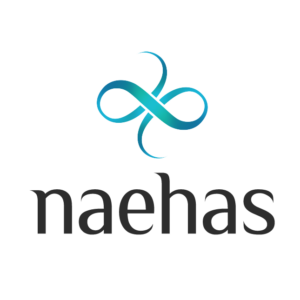With all eyes on the Federal Reserve and its Open Market Committee (FOMC) this summer, it’s safe to say change is the only constant. Rate changes, that is. As expected, we’re fielding calls and questions on how to manage offers and disclosures when typical cycle times are 4-6 weeks minimum. Our CEO, Rab Govil, speaks to the readily-available technology that answers these challenges.
“Rapid response in the face of rate changes is imperative for banks looking to drive growth and not leave offers, and money, on the table,” said Govil in a recent executive team discussion.
Here, then, as time is of the essence, we address best practices, available now, to manage rapidly-changing rate changes.
Rate Changes and Bank Marketing: Rapid Response for ROI
As it did on June 15, and is expected to do again during its mid-July meeting, the FOMC, detailed in a statement by Federal Reserve Chairman Jerome Powell, raised rates in an effort to curb inflation. The decision was summarized in a news release issued June 16, 2022, which clarified “Decisions Regarding Monetary Policy Implementation,” provided at the end of this article.
 While it’s too soon to predict what may transpire in FOMC meetings set for the remainder of 2022 (September 20-21, November 1-2 and December 13-14), we can say with certainty that banks are struggling to navigate through these challenging headwinds.
While it’s too soon to predict what may transpire in FOMC meetings set for the remainder of 2022 (September 20-21, November 1-2 and December 13-14), we can say with certainty that banks are struggling to navigate through these challenging headwinds.
Alas, there is good news for banks. Surprised? Shouldn’t be. If you’ve followed what our Naehas leadership has been sharing over the past year, you’re familiar with the industry cloud technology we provide as a SaaS leader, offering innovative solutions purposely-built for the complex, heavily regulated financial services industry.
Now, more than ever, automation is getting attention and gaining traction within enterprises whose savvy marketing, legal and compliance teams have come to understand the meaning behind “automate to accelerate” and drive growth, even and most especially under these unprecedented circumstances of fast-paced prime rate changes.
Driving Growth: Automate to Accelerate
Our team is at the ready with actionable insights into how to best adapt to rate changes.
In a series of resources, from blogs to our latest videos, our experts are offering digestible To Dos on managing offers and disclosures. We offer prime examples of prime rate change solutions.
Agile marketers at banks need to be able to quickly adapt. Especially with the Fed rate changes, martech leaders need to find the solution to easily implement a prime rate change across a multitude of offers, disclosures, updating marketing and creative materials. As Andrew Roth notes in a video on adapting to frequent prime rate changes, “This process can take weeks or up to a month to implement, not to mention blowing up your budget and giving you a headache.”
Roth addresses two key concepts and best practices to manage this challenge. The solutions apply to banks and credit card issuers, allowing their marketing teams to make a change to the prime rate in minutes not weeks. Here’s how he summarizes the solution: “First, one of the key concepts is storing all of your offer strategy information in the platform. This allows you to take advantage of our flexibility to automatically calculate different APRs based on your prime rate. When the rate is being updated from 4 to 4.5, he explains, it’s as easy as updating your prime rate and hitting save. As you notice, our APR is going to update automatically and in real time. Next, we can create a channel-ready proof using this new data that is available almost instantly. And it is as simple as clicking the generate proof icon and is followed by generate. Now we can see the new marketing materials contain the new APR wherever that is being used.”
“This automation takes the headache and cost out of future prime rate changes by being prepared with the Naehas platform,” said Roth on leveraging the industry cloud platform.
Another colleague, Jackson Anderson, addressed the core concerns of automation in an article published earlier this year. It’s particularly relevant now. Titled “How AI Dries Growth in Bank Marketing,” he offered valuable insight into why automation is critical for banks seeking to gain and maintain a competitive edge – especially amidst upcoming rate changes which the Federal Open Market Committee (FOMC) is expected to make by the end of 2022.
Now more than ever, automation and its benefits deserve a brighter spotlight. This technology supports a current and clarion call for bank leaders and their marketing and compliance managers who are now grappling with multiple rate changes.
“The key for banks and credit card issuers is a rapid response to rate changes,” according to Naehas CEO and Founder, Rab Govil. Cloud platforms purposely-built for this industry allow finserv marketers and compliance managers a critical advantage. More than ever, leveraging automation to accelerate growth is key for bank marketing and compliance teams,” urges Govil.
How does automation drive success for banks and the finserv industry? In many measurable ways.
7 Ways Banks Benefit from Automation
- Alleviating the time-consuming minutia of ad reviews
- Allowing teams that were tasked with reviews to focus on other marketing initiatives
- Leveraging workflow to handle the increasing volume of offers
- Securing a better customer experience that expands the relationship
- Reducing manual errors
- Eliminating risk with traceability and auditability
- Avoiding costs from fines imposed by government regulatory compliance failures.
Today’s reality is that artificial intelligence is not going to replace the human review of marketing materials; it will simply enhance it. Allowing AI to do the rote and analytical work can save the really tough (and interesting) stuff for your bank marketing and compliance teams. Think of it this way: if they don’t need to worry about the minutia, what can a sharp marketing mind really be doing? If they don’t need to wonder, “is that disclosure accurate”, what can a terrific compliance person be focused on instead?
With our team laser-focused on supporting financial services institutions and the regulations for which they must comply, I write often about resources for managing disclosures.
Leveraging automation as a virtual compass is how leading credit card issuers and banks are weathering the proverbial storms. Let’s look at the practical ways this works. This answers the question of just how automation enhances outcomes. By improving the customer experience – increased personalization, and efficient omnichannel marketing, you meet the customer where they are, the way they want to be reached. As our team has noted in multiple high-level discussions with industry experts (check out the webinars in our website’s Resource Center), there are tech tools that empower financial services marketing teams to boost personalization and profits, while driving customer engagement. Automation, then, becomes a marketing force multiplier.
“The ROI is immense,” Rab Govil, Naehas Founder and CEO
 These automated processes allow martech teams to improve personalization and marketing segmentation, allowing the organization to land and expand a loyal, long-lasting relationship. That drives growth. When your compliance and risk management teams are able to provide transparent, easy to access disclosures, and you have confidence that your regulated content review process has reduced manual errors, that increased auditability is good for both the audit and compliance managers and the regulators alike. Prioritizing compliance and disclosure management is critical to not only avoiding massive fines, but to creating an atmosphere of transparency and reduced risk that supports the organization and its stakeholders. That drives growth. And when workflow is optimized – reducing error-prone manual reviews at every touchpoint and helping compliance, IT and marketing configure various cardholder agreements accurately, everyone wins.
These automated processes allow martech teams to improve personalization and marketing segmentation, allowing the organization to land and expand a loyal, long-lasting relationship. That drives growth. When your compliance and risk management teams are able to provide transparent, easy to access disclosures, and you have confidence that your regulated content review process has reduced manual errors, that increased auditability is good for both the audit and compliance managers and the regulators alike. Prioritizing compliance and disclosure management is critical to not only avoiding massive fines, but to creating an atmosphere of transparency and reduced risk that supports the organization and its stakeholders. That drives growth. And when workflow is optimized – reducing error-prone manual reviews at every touchpoint and helping compliance, IT and marketing configure various cardholder agreements accurately, everyone wins.
Whether it’s utilizing the Digital Asset Management (DAM) system to easily search and locate various card offers in a single repository, developing a process for better auditability, or shortening the lifecycle of an offer, there are measurable and meaningful ways that marketing technology teams can make quick gains. After supporting a large number of credit card issuers through the complexities of disclosures, compliance and offer management, we’ve found eight core benefits.
Automate to Accelerate Growth
- Optimize workflow
- Realize operational efficiencies
- Dramatically reduce risk
- Decrease manual errors and avoid fines
- Increase/improve regulatory compliance processes
- Successfully manage disclosures
- Achieve greater speed to market
- Generate revenue
“It all comes full circle,” said Naehas Senior Director Brent Plow. In that discussion where he was answering a martech pair’s questions, he added, “It’s leveraging automation that answers all those questions…how do we get cardholder agreements, manage those disclosures, the pricing matrix and ultimately the review process with intelligent reviews of regulated content and the DAM system, which creates the full boat solution.”
Driving growth with automation is a fundamental finserv solution for leading institutions.
FOMC Meeting Statement
The Federal Reserve has made the following decisions to implement the monetary policy stance announced by the Federal Open Market Committee in its statement on June 15, 2022:
The Board of Governors of the Federal Reserve System voted unanimously to raise the interest rate paid on reserve balances to 1.65 percent, effective June 16, 2022. As part of its policy decision, the Federal Open Market Committee voted to authorize and direct the Open Market Desk at the Federal Reserve Bank of New York, until instructed otherwise, to execute transactions in the System Open Market Account in accordance with the following domestic policy directive:
“Effective June 16, 2022, the Federal Open Market Committee directs the Desk to:
- Undertake open market operations as necessary to maintain the federal funds rate in a target range of 1-1/2 to 1-3/4 percent.
- Conduct overnight repurchase agreement operations with a minimum bid rate of 1.75 percent and with an aggregate operation limit of $500 billion; the aggregate operation limit can be temporarily increased at the discretion of the Chair.
- Conduct overnight reverse repurchase agreement operations at an offering rate of 1.55 percent and with a per-counterparty limit of $160 billion per day; the per-counterparty limit can be temporarily increased at the discretion of the Chair.
- Roll over at auction the amount of principal payments from the Federal Reserve’s holdings of Treasury securities maturing in the calendar months of June and July that exceeds a cap of $30 billion per month. Redeem Treasury coupon securities up to this monthly cap and Treasury bills to the extent that coupon principal payments are less than the monthly cap.
- Reinvest into agency mortgage-backed securities (MBS) the amount of principal payments from the Federal Reserve’s holdings of agency debt and agency MBS received in the calendar months of June and July that exceeds a cap of $17.5 billion per month.
- Allow modest deviations from stated amounts for reinvestments, if needed for operational reasons.
- Engage in dollar roll and coupon swap transactions as necessary to facilitate settlement of the Federal Reserve’s agency MBS transactions.
In a related action, the Board of Governors of the Federal Reserve System voted unanimously to approve a 3/4 percentage point increase in the primary credit rate to 1.75 percent, effective June 16, 2022. In taking this action, the Board approved the request to establish that rate submitted by the Board of Directors of the Federal Reserve Bank of Minneapolis.






